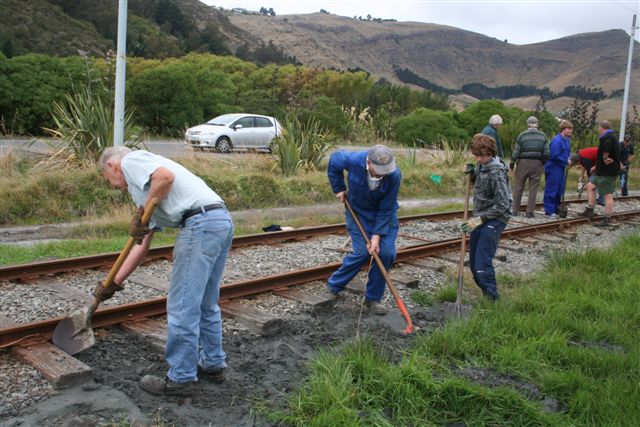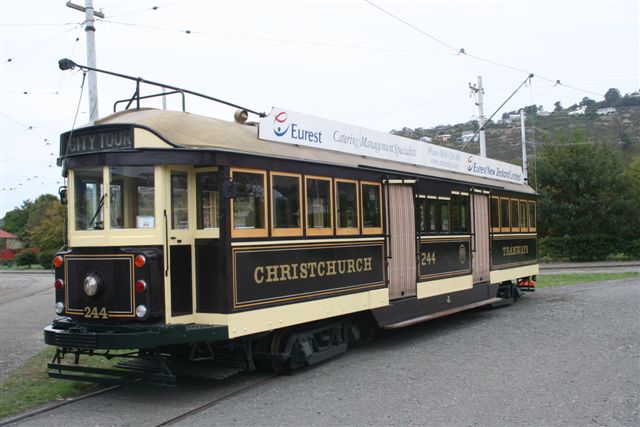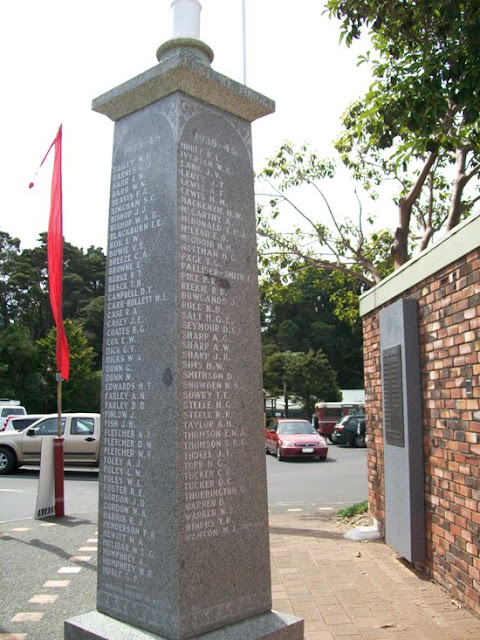For years, heading past in buses along Great North Road just out from the Pt Chevalier shops, I’ve wondered just why the eastern corner of Moa and Great North Roads (1073 Great North Road) was empty. Had a house ever been there? How long as that corner been vacant? I decided recently to follow that question that often leads me down research paths these days: why is that corner the way it is?
The corner is a small fraction of the original Allotment 27 of the Parish of Titirangi, itself a further part of the northern part of the Sutherland Estate, a 149 acre farm stretching from Pt Chevalier Road (then called Barracks Road) and the Meola Stream. I wrote about the Sutherland Estate in number 4 of the Pt Chevalier Times, how the farm had a series of Scottish owners, was leased to William Motion in 1864 –likely as part of his sheep run – and to Samuel White in the 1880s, when he operated a night soil depot controversially close to the new municipal water supply at Western Springs.
In 1911, farmers William and James Thompson of Auckland and Alexander Bell of Morrinsville purchased both Allotment 27 and the adjoining Allotment 26. At some point before 1913, the Thompson-Bell partnership sold property to the Liverpool Estate Syndicate for £10,000, the equivalent of around $1.5 million today. (Letter to Official Assignee from the Syndicate, 5 July 1920) Thomas Henry Dignan, James Gustavus Mack, Sydney Mack (all from Pt Chevalier, the latter a land agent) were among the signatories to the subdivision plan from 1913 which laid out Tui, Huia and Kiwi Roads (DP 8813). Oddly, the Liverpool Estate syndicate did not appear on the formal title as owners, though Thomas Dignan, Thompson and Bell are names associated, in 1916-1918, with proposals to the Auckland Education Board a part of their land (Liverpool Estate) fronting onto Pt Chevalier Road, including part of Huia Road, as a possible site for a school in the district. (The new Pt Chevalier School finally ended up built on land once owned by Thomas Dignan, on Te Ra Road).
Moa Road was dedicated around 1913 as well, on a separate subdivision but all part of the Liverpool Estate sale. The angle of Great North Road which swings slightly to the south just before Moa Road meant that this section of the subdivision would always have irregular-shaped sections at the end of Moa Road – but, somehow, only lots 27 and 28 of DP 8812 were really affected. The rest were progressively sold and developed as time went on, fairly well without any hitches.
In 1922, lots 27 and 28, at the eastern corner of Moa Road, were still in syndicate ownership – only now, the official owners (NA 359/57) were Francis John Dignan, Frederick Patrick James Dignan, James Mack once again, with Hallyburton Johnston. A year earlier, the syndicate appear to have had some sort of a deal with a builder named George Arnold, with the view to building a retail complex there. His name only appears on City Council records from that time, including in 1923 when permission was sought to subdivide lots 27 and 28 into three sections. (DP 17153) The only reference I’ve found to the submission in the Council’s minutes, a report from the City Engineer, appears to have been confused as to both the lot numbers, and the sizes of the subdivision (the lots put forward by Arnold and the lawyers were slightly larger, but still small).
Dignan, Armstrong, Jordan & Jordan, 21/6/1923Submitting for approval plan of proposed subdivision of Lots 28 & 29, Great North Road, Point Chevalier, owned by George Arnold.City Engineer, 28/6/1923Stating that the proposed subdivision has a frontage to Great North Road, which is a main thoroughfare, and in the course of time the property in this vicinity will be utilised for the purpose of erecting shops thereon, that the sections have a frontage of 50 feet, 50 feet and 52 feet, respectively to the main road, a maximum depth of 118 feet and a minimum depth of 73 feet to the street, and in all the circumstances recommending that the subdivision be approved.
Council minutes, 12 July 1923, p. 1448
Nothing happened, perhaps due to the recession the country went through at the time. In January 1924, the syndicate managed to sell all three parts of their 1923 subdivision to Mrs Gladys Coral Gash, who transferred it to Mrs Florence May Mines (c.1882-1955) the following month. Florence was the wife of Jesse Mines (c.1866-1933), and together they ran a lock-up general store up at 67 Old Mill Road, The building was still there as at 2009. Widowed in 1933, Florence was successful in selling Lots 2 and 3 in 1935/36 – but Lot 1 was a bit of a problem. Council realised that the lot was too small for residential development – yet, because it was in a residential zone, couldn’t be developed as a retail site.
24 June 1935T Jordan, on behalf of Mrs F M Mines, applying for permission to erect a house on Lot 1, Plan 17153, Great North Road, Pt Chevalier, which area is less than the minimum area required at the present time in the case of dwelling houses.1 July 1935City Engineer: reporting that although the area is below the by-law minimum for that district, Council approved of this subdivision on 12 July 1923; two lots being cut into three, and therefore it is only reasonable to grant permission to erect a dwelling house as requested. He would point out, however, that the house must be so erected on the lot that the yard space required under the Municipal Corporations Act is obtained.Recommend that application be granted, in terms of the City Engineer’s report.
Valuation field sheets, ACC 213/60a, Auckland Council Archives
Florence Mines managed to sell Lot 1, right on the corner, to a Mrs Dorothy Williams in Kaikohe, most likely as a piece of investment property in Auckland. The investment went sour, when Mrs Williams realised she couldn’t develop on the site either.
11 October 1935H L Beech & Company: applying for permission to erect a residence with a Bowser Station in front, on Lot 1 at the corner of Moa Road and Great North Road, Pt Chevalier. They add that there are two or three feet of good top soil on the section which could be given to Council for top-dressing at the Stone Jug.16 October 1935City Engineer: reporting that in the zoning scheme relating to this district, this property is located within the Residential District wherein buildings for commercial purposes are not permitted, and he sees no reason for Council to make any departure from the zoning scheme.
Recommend that the application be declined.
Valuation field sheets, ACC 213/60a, Auckland Council Archives
And so, Lot 1 right on the corner remained empty, too small for a house and yard, and in the wrong place for anything else other than grass.
In 1947 Mrs Williams finally sold the site to Mrs Kate Nobilo, who gifted the property to her daughter Milly two years later. John and Kate Nobilo were farmers up at Te Hana from around 1911. It appears that it was John who ordered his nephew Nikola Nobilo to come to New Zealand, where ultimately Nikola set up a legendary winery at Huapai. John Nobilo purchased No. 7 Moa Road, next door, in 1943, and his daughter Milly was to live there from that point for most of the rest of her life. She died in 2007, at the age of 97, her funeral service at the nearby St Francis and St Therese Catholic Church in Montrose Street, Pt Chevalier.
So, the empty section is that way through subdivision confusions and misunderstandings, during the time of Pt Chevalier’s urban development. Whether it will finally be redeveloped now is up to its present, or future owners. For now, though, it's the remains of an area of farmland where once sheep grazed, then night carts clattered, all a long time ago.
Update 24 August 2012: The empty corner is empty no longer -- the owners have created a carpark for their new early childhood facility The Rumpus Room.
Update 24 August 2012: The empty corner is empty no longer -- the owners have created a carpark for their new early childhood facility The Rumpus Room.




















































